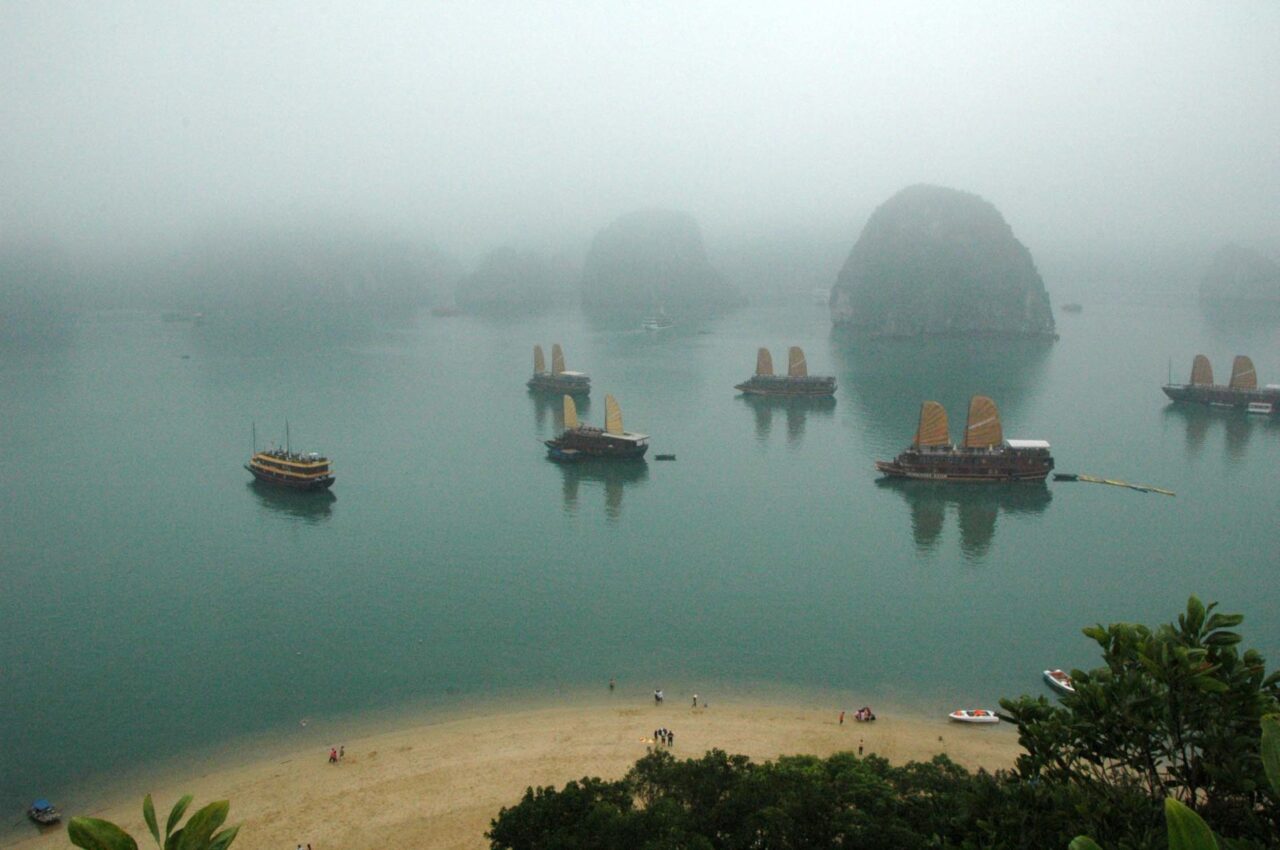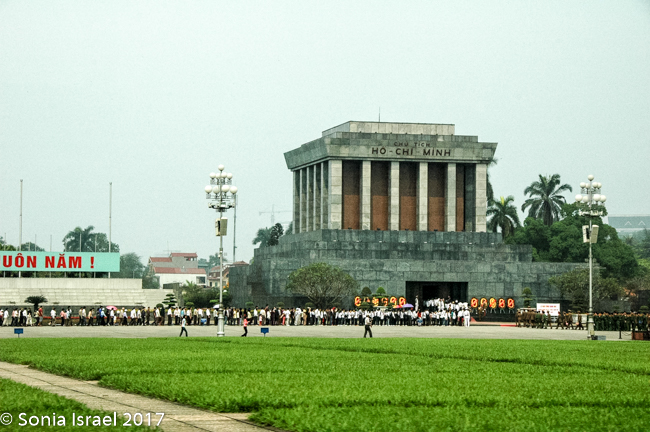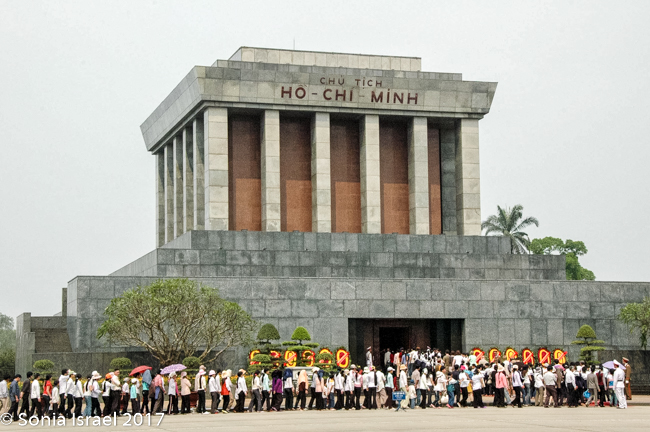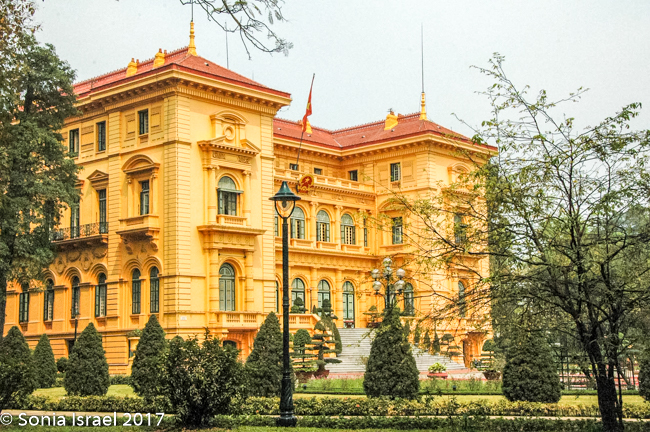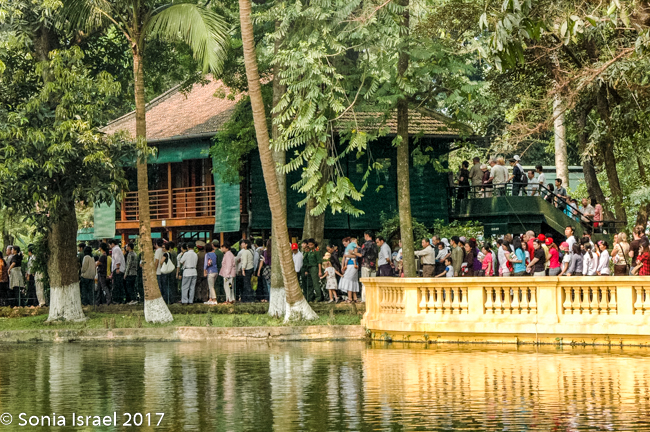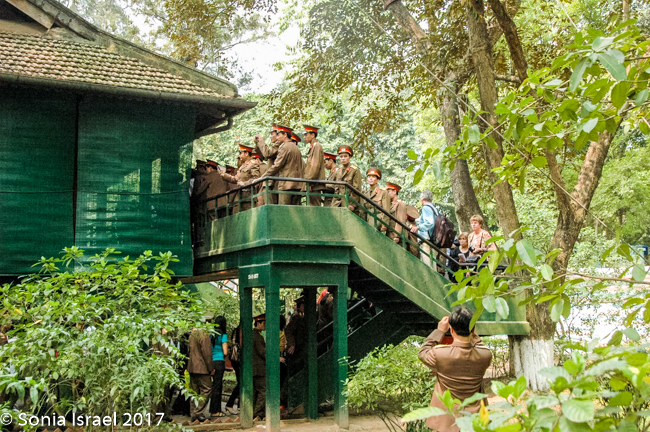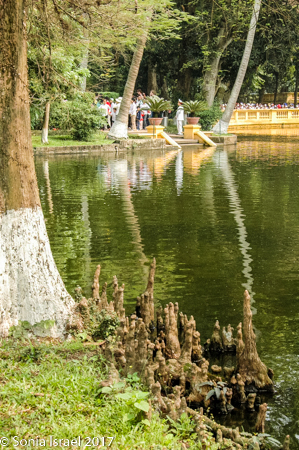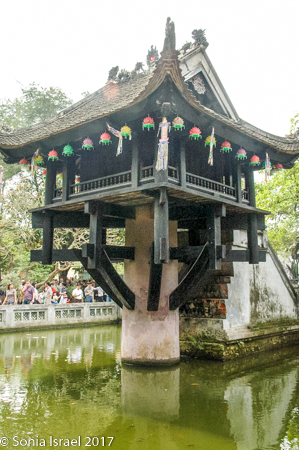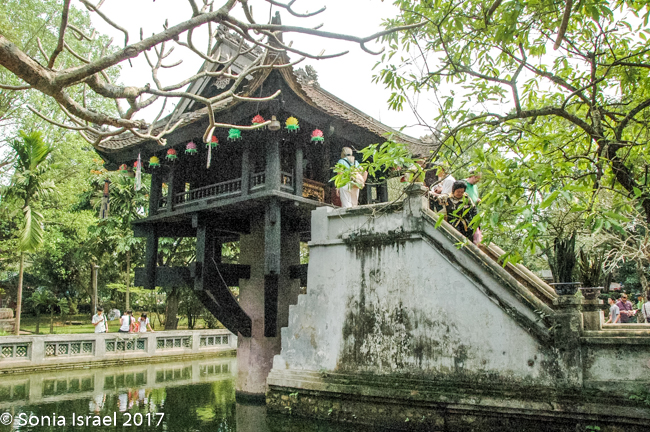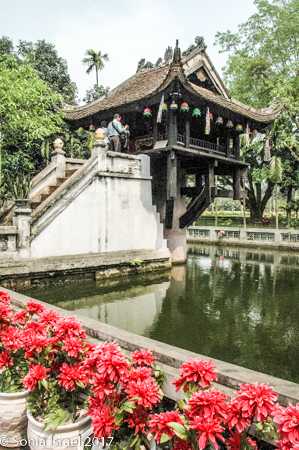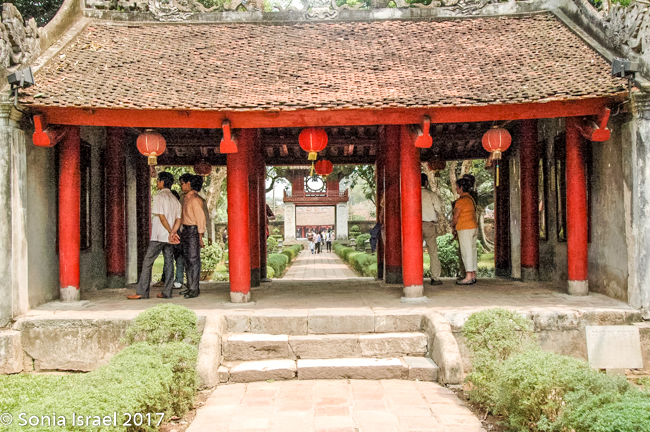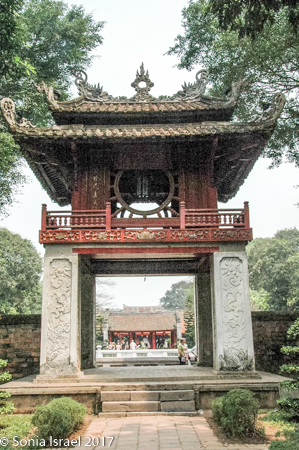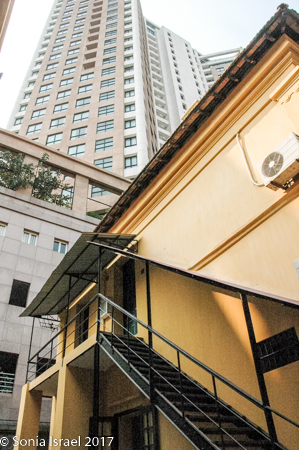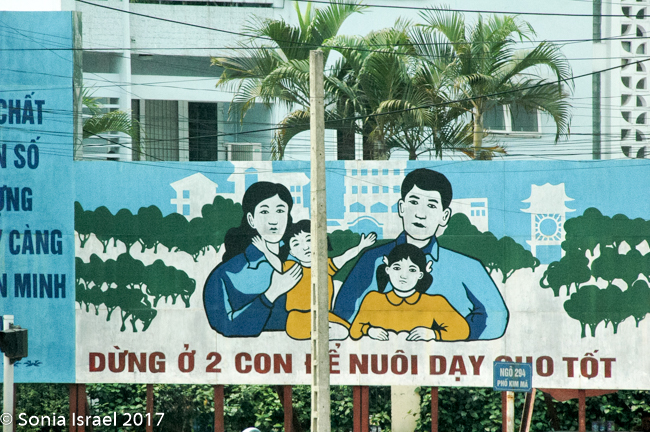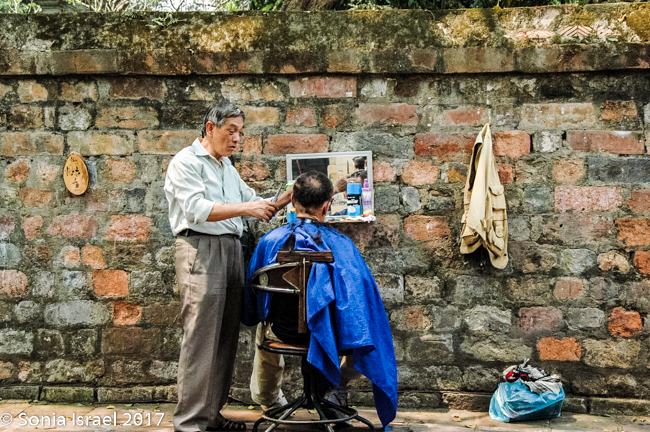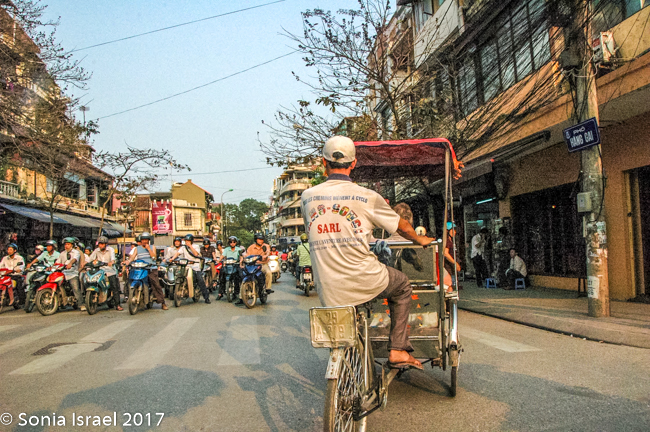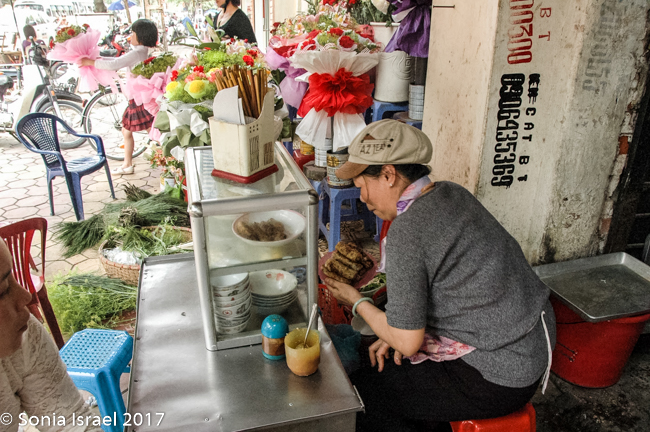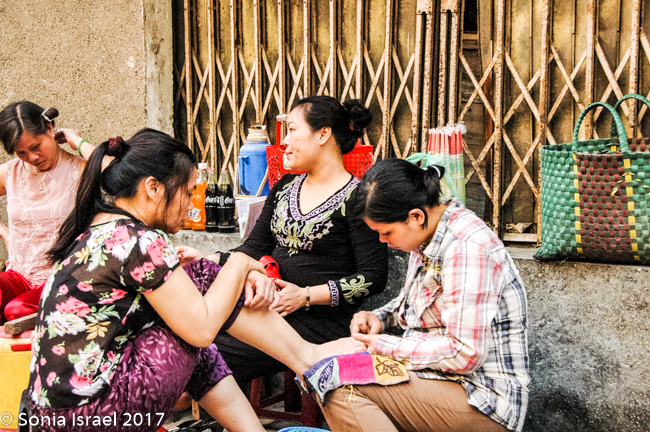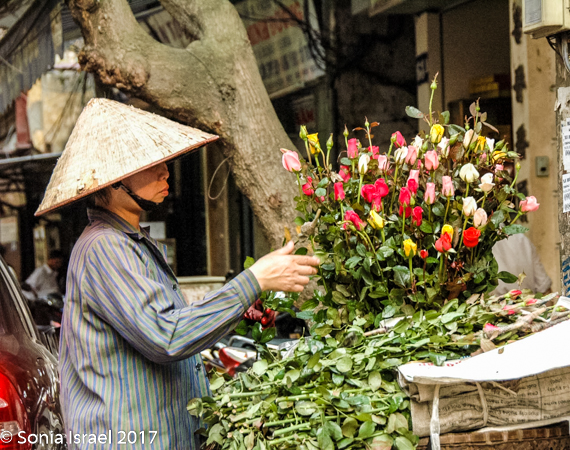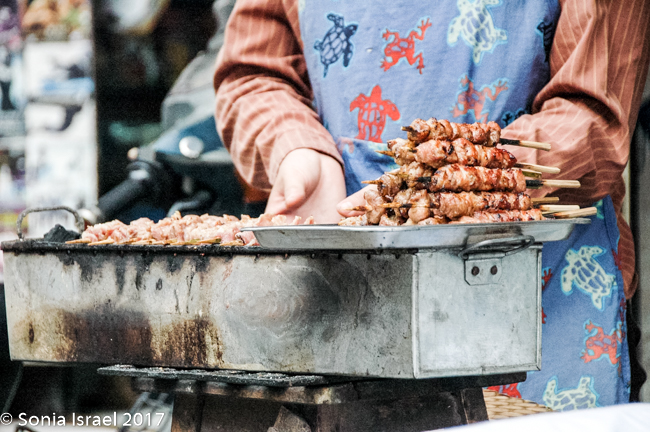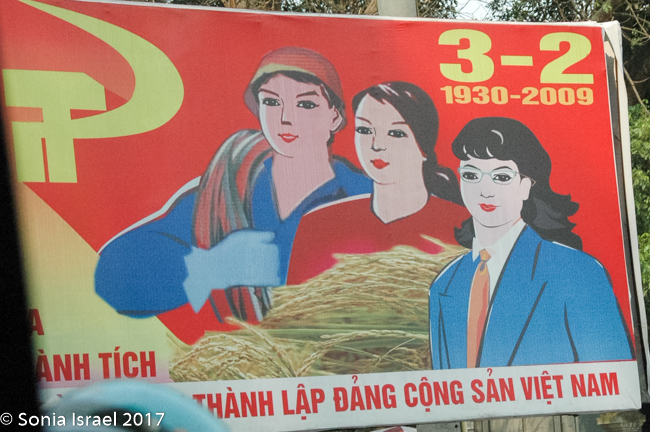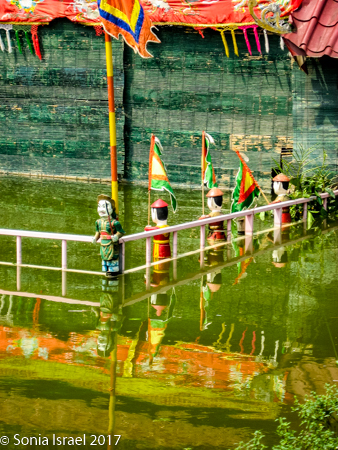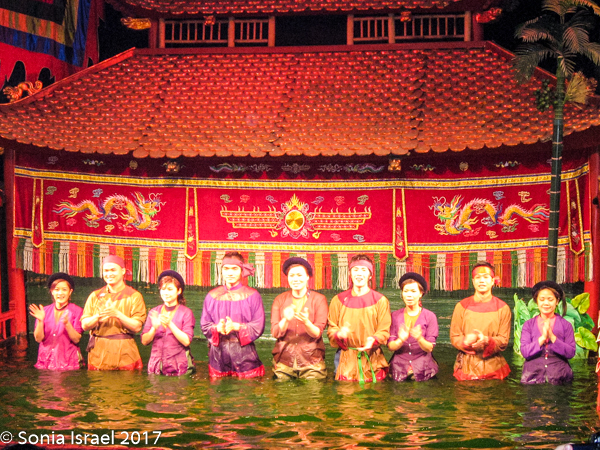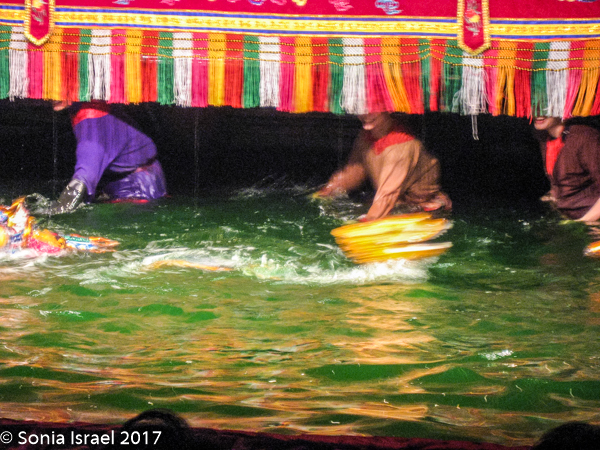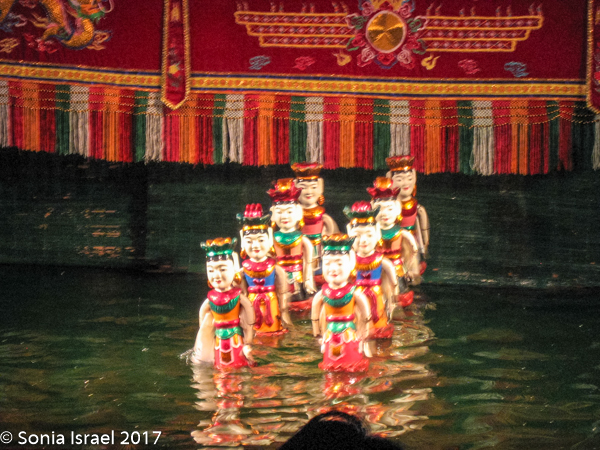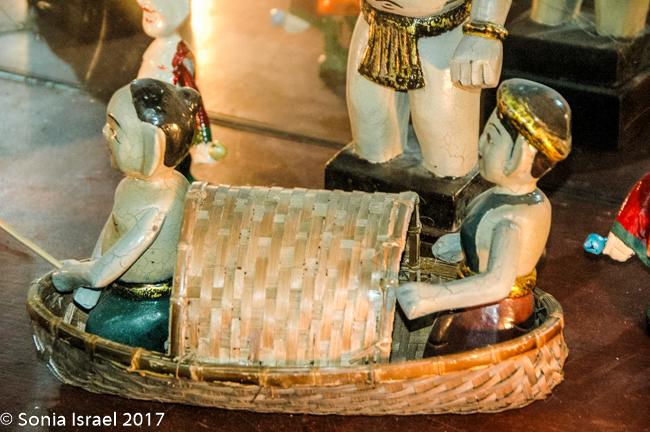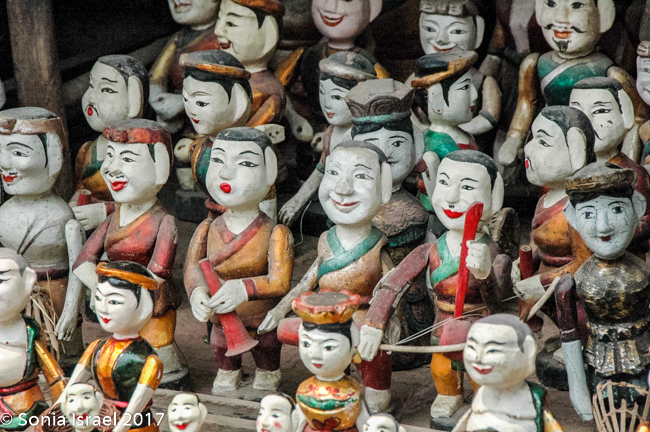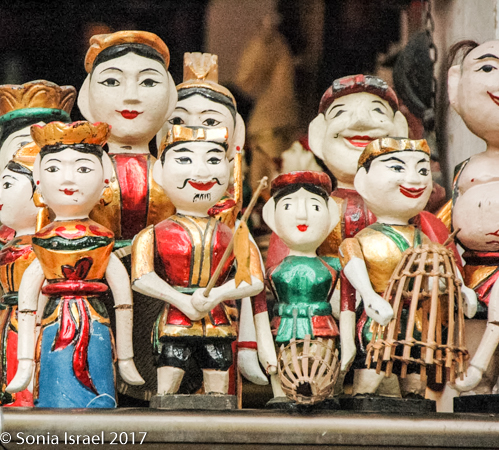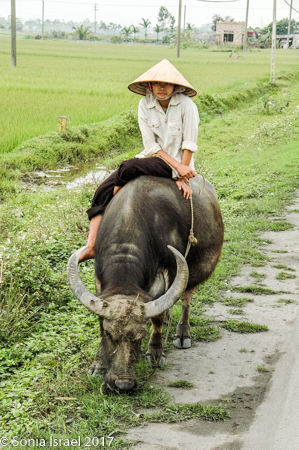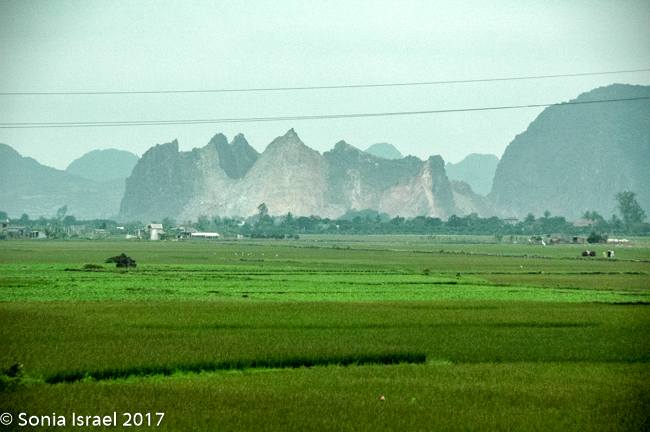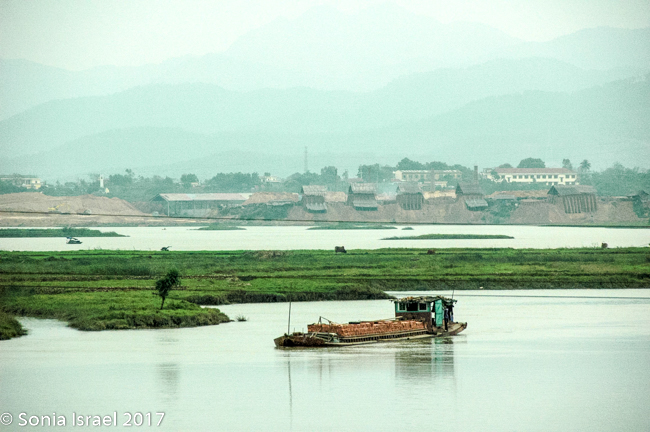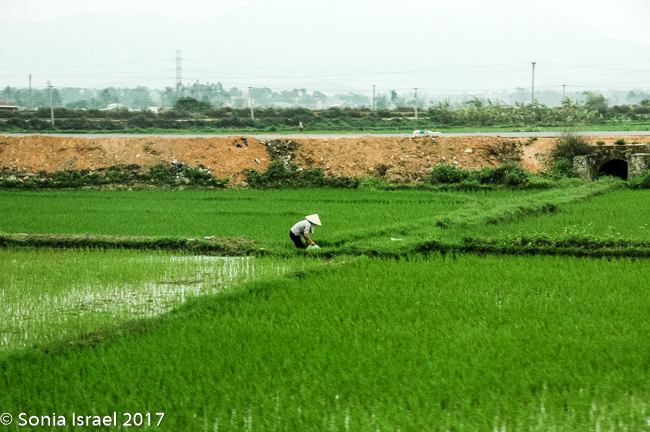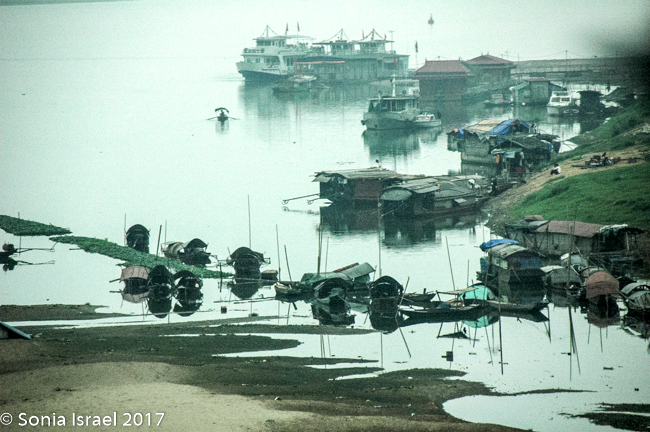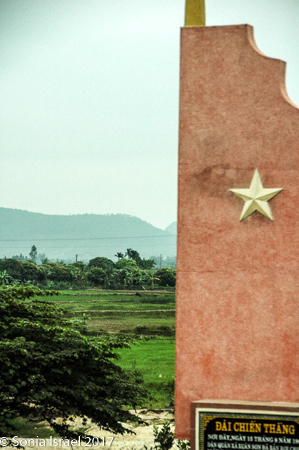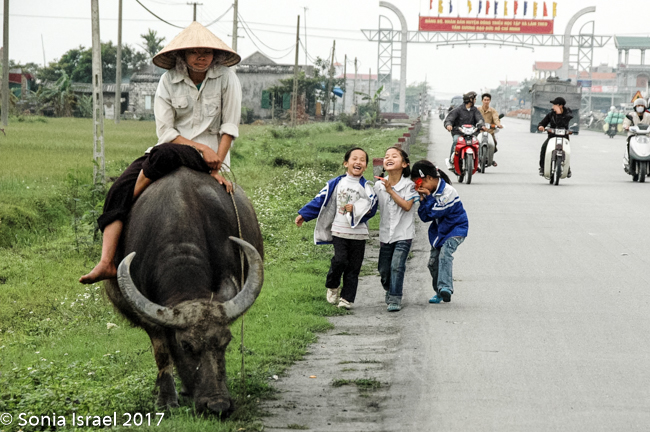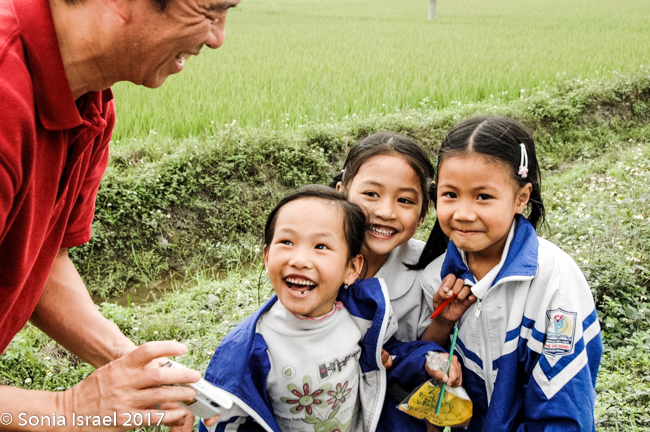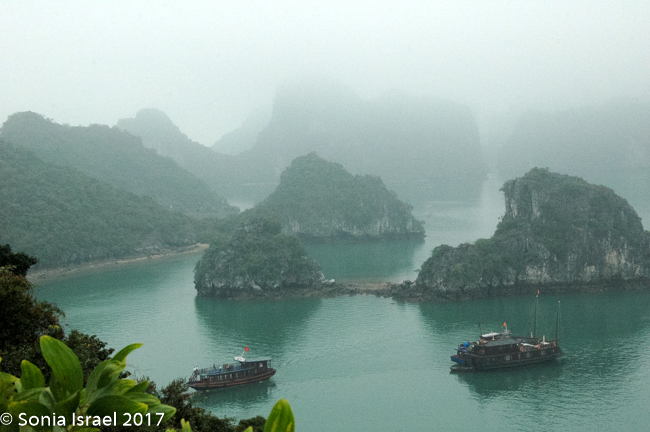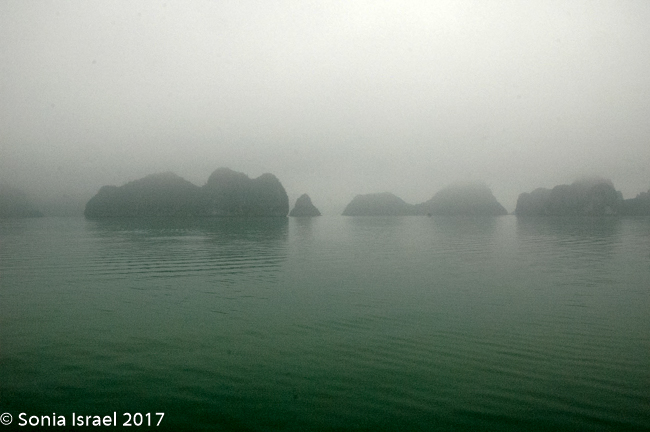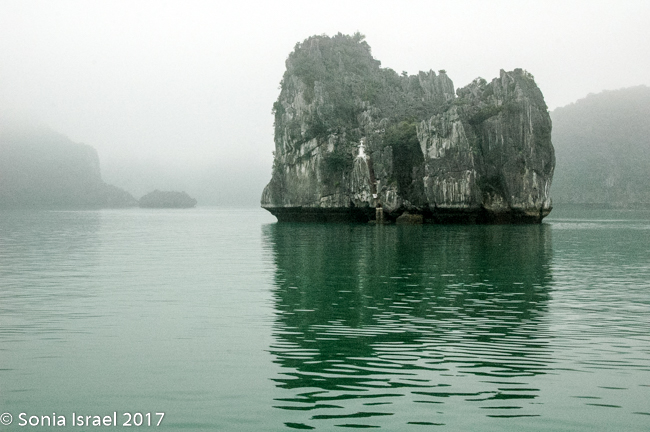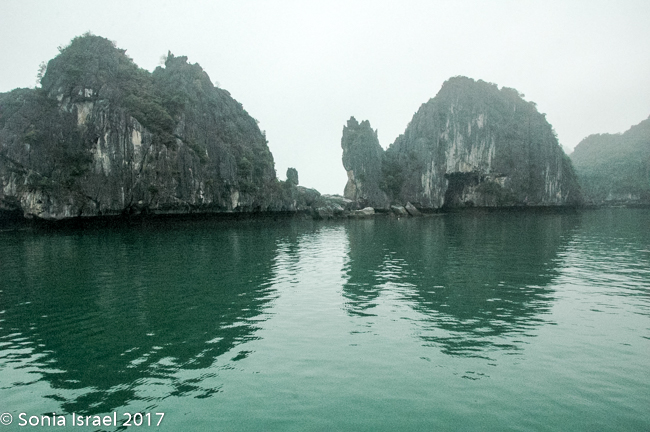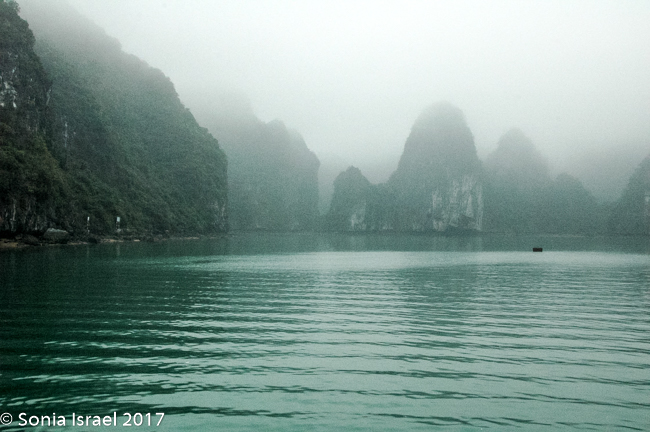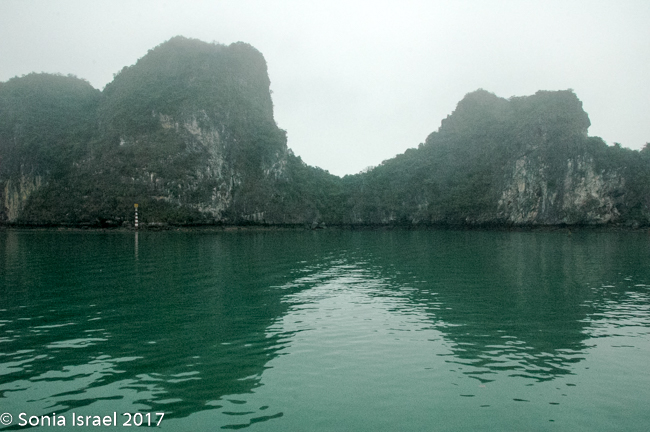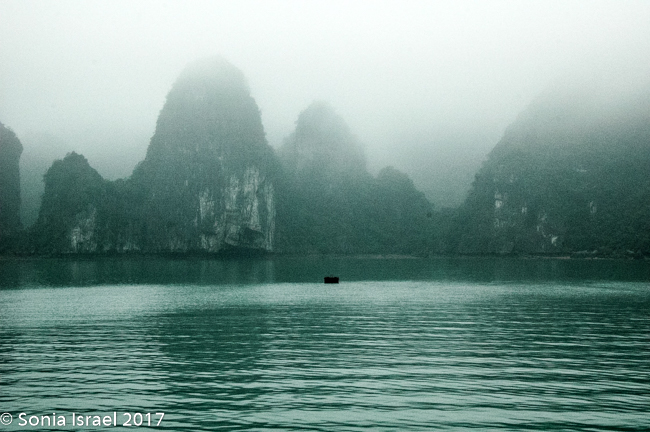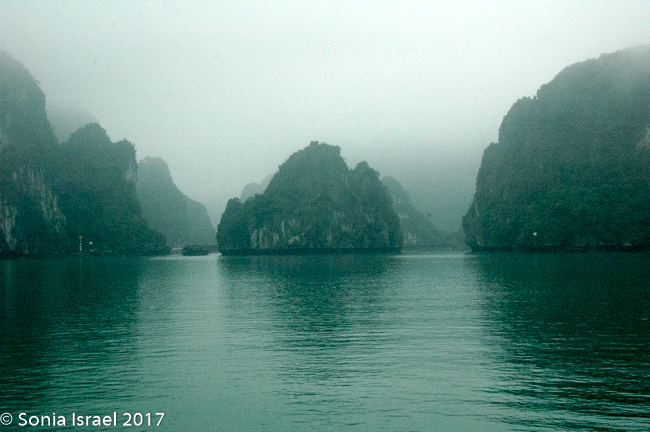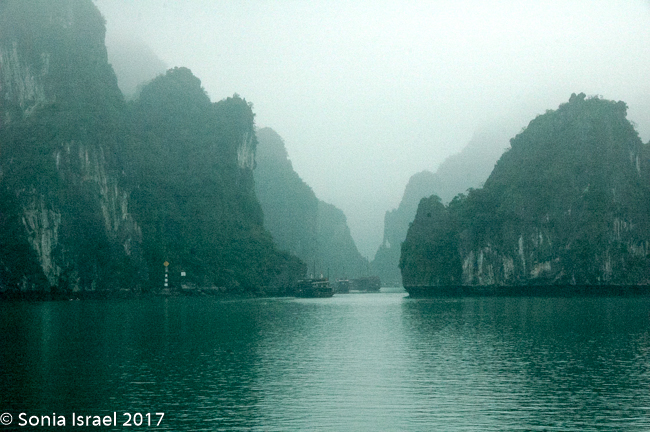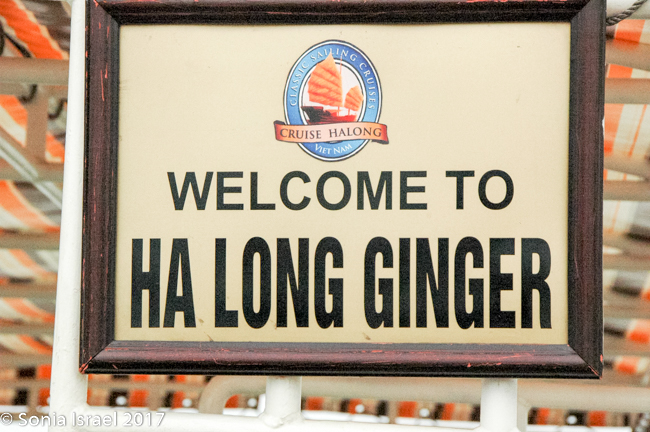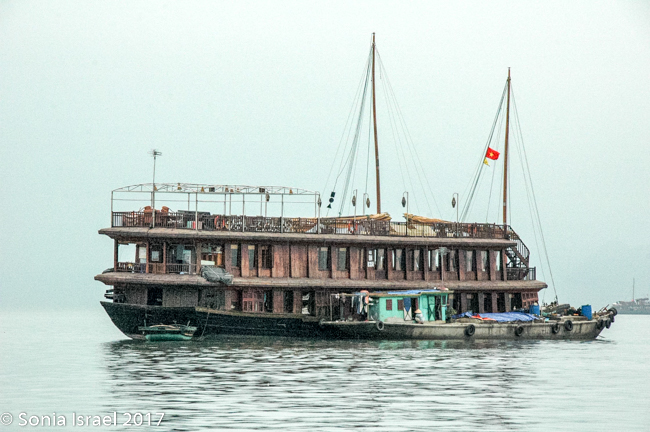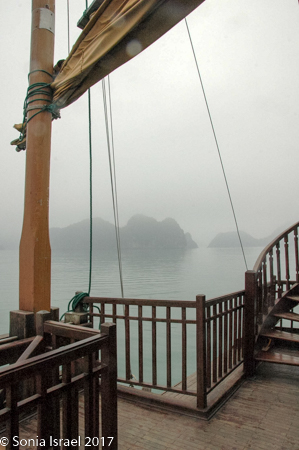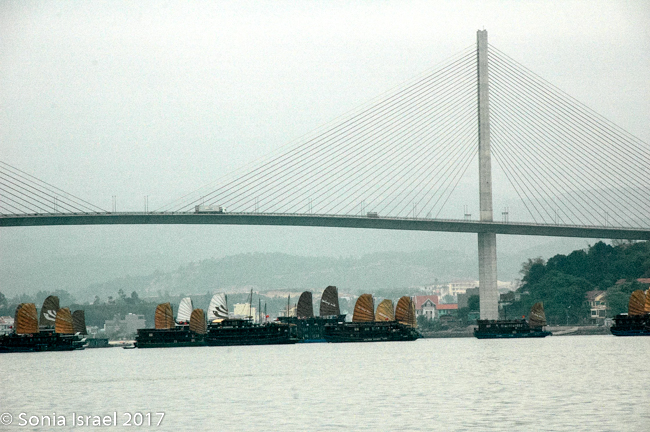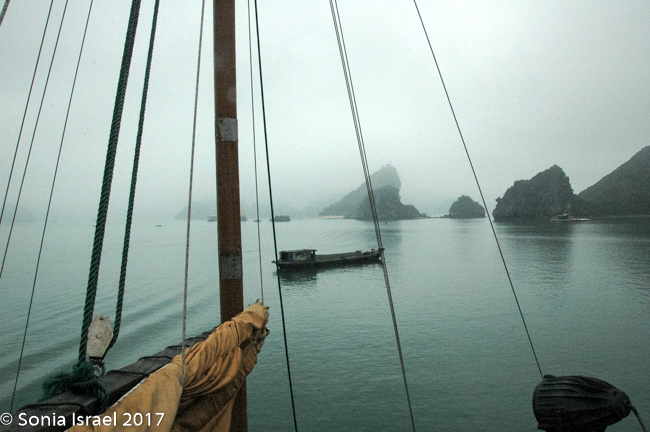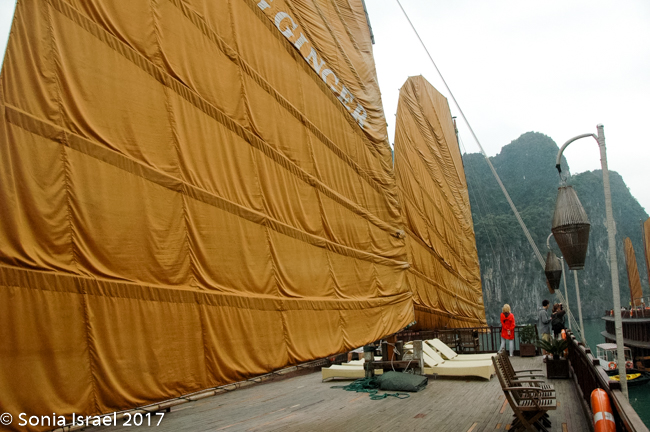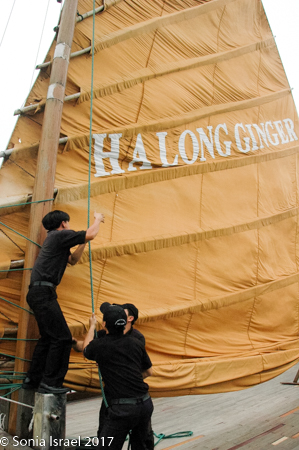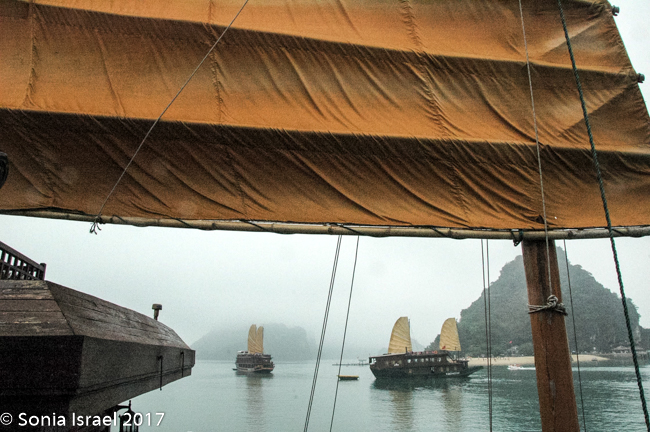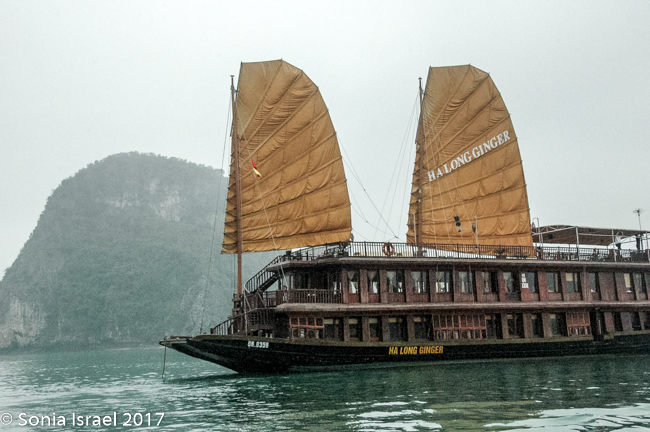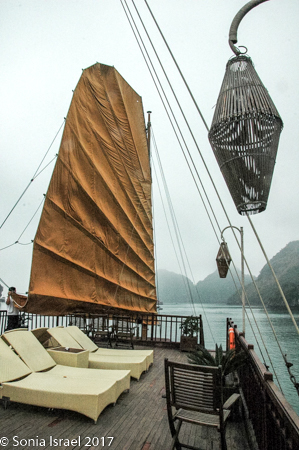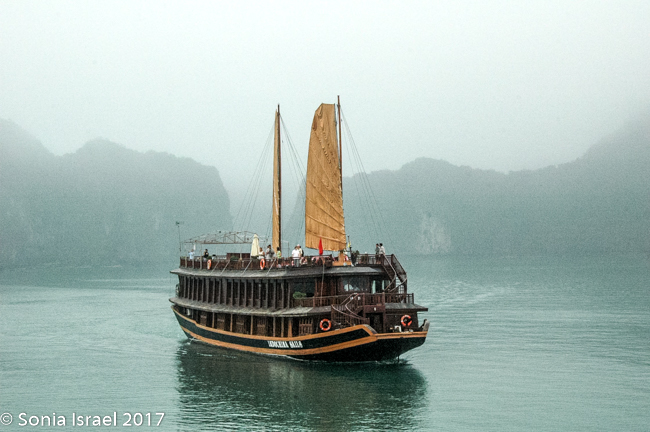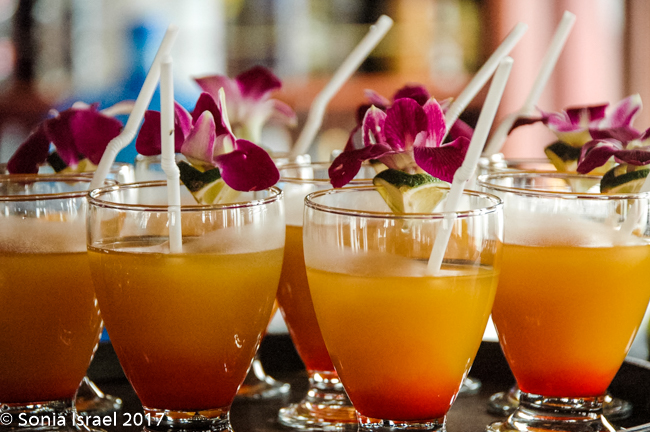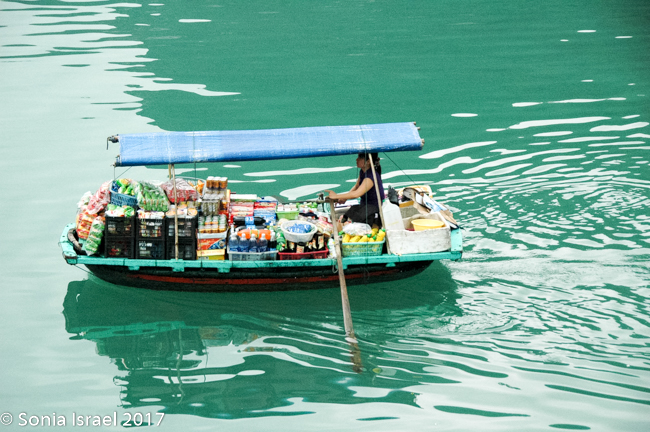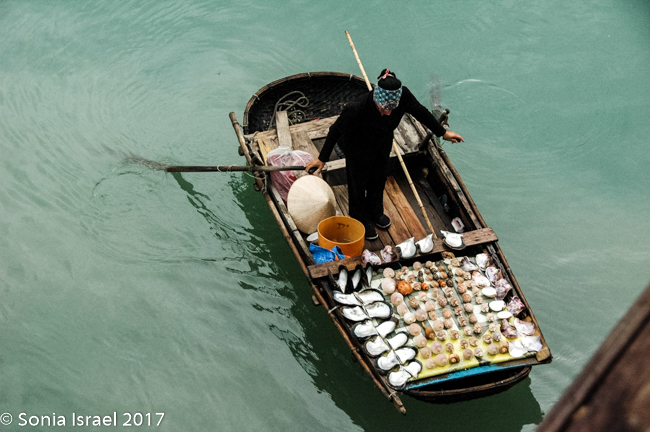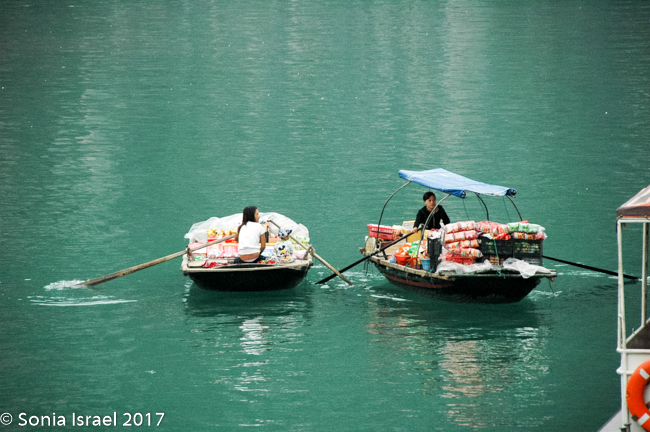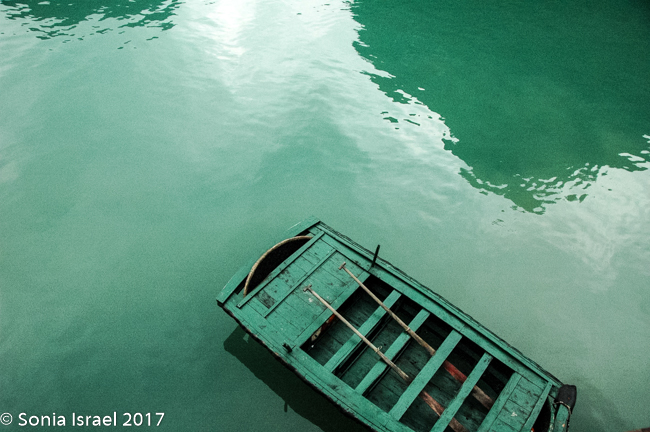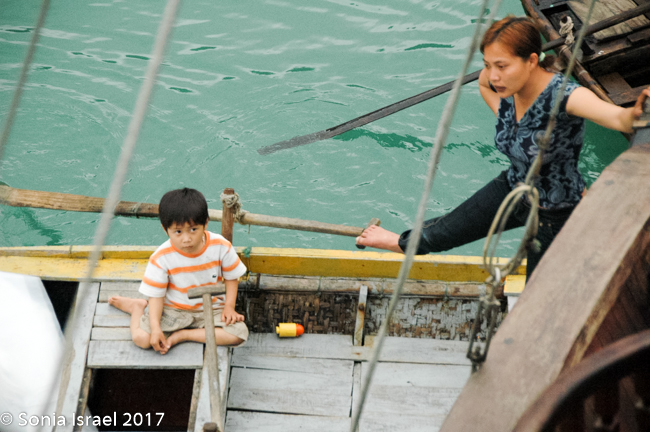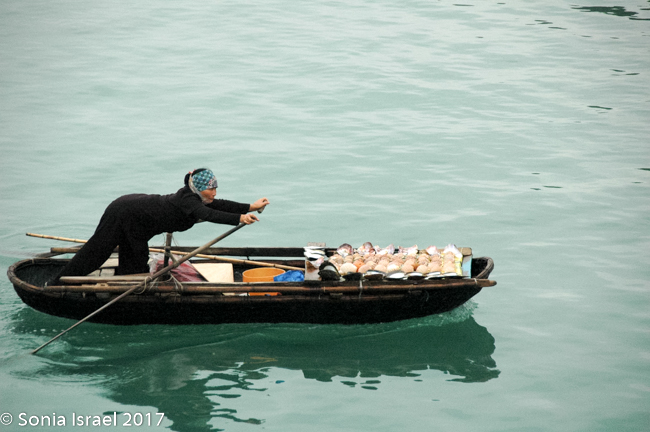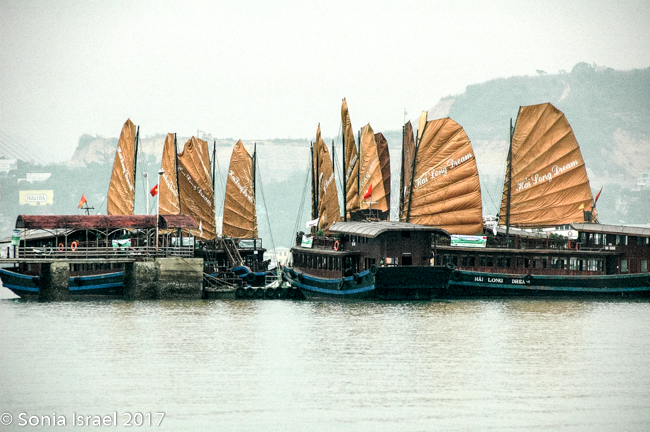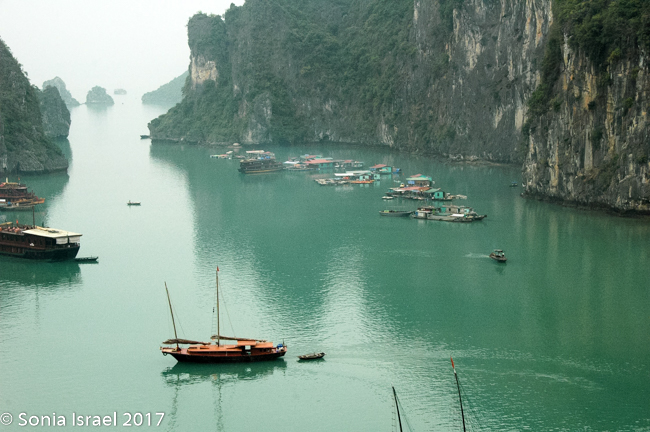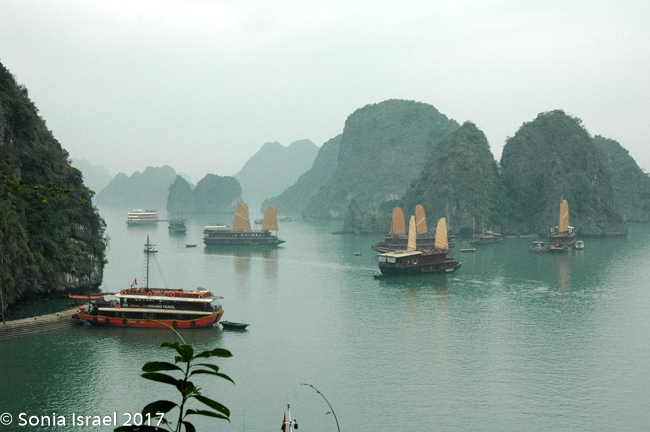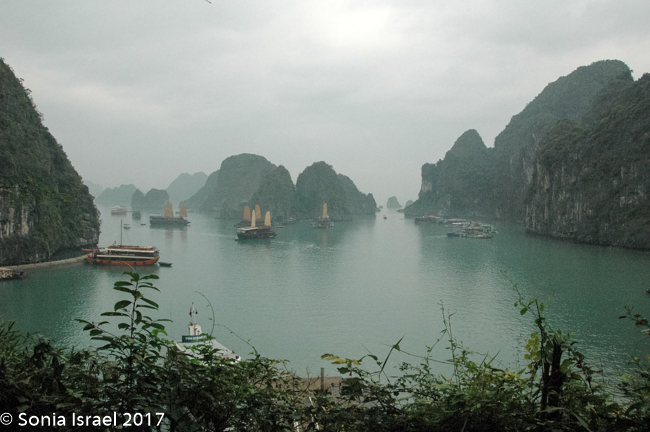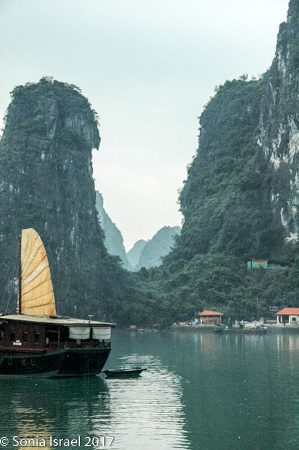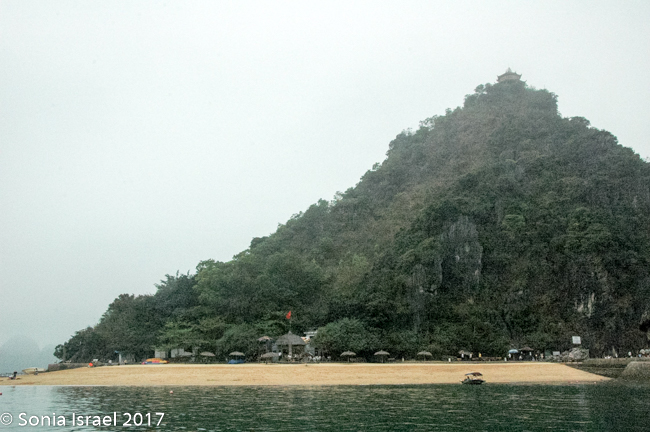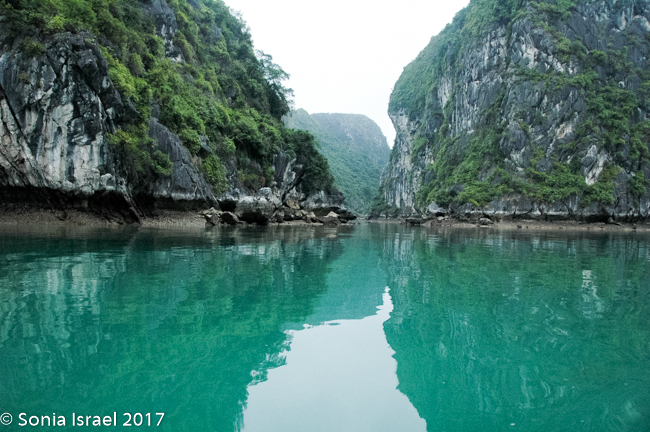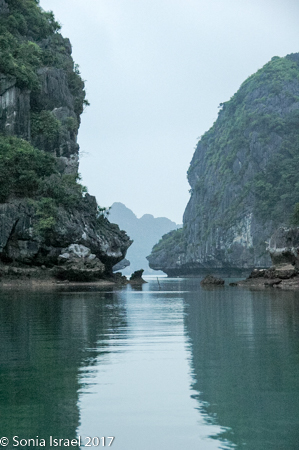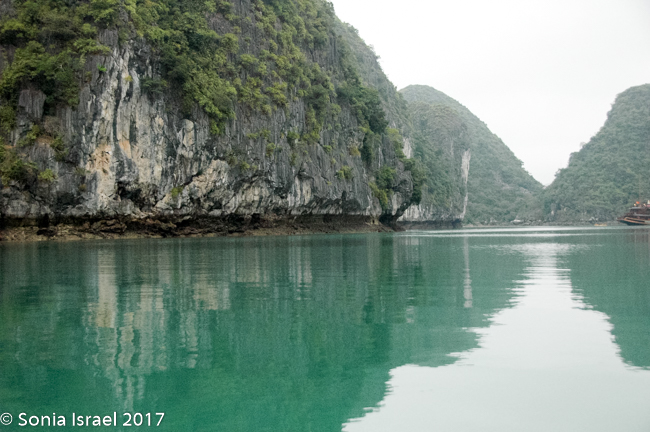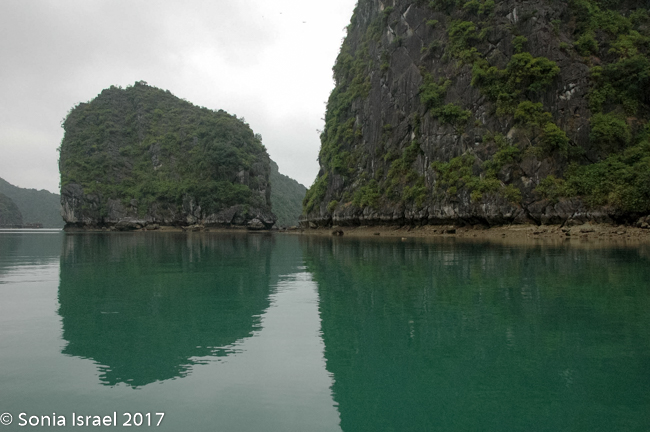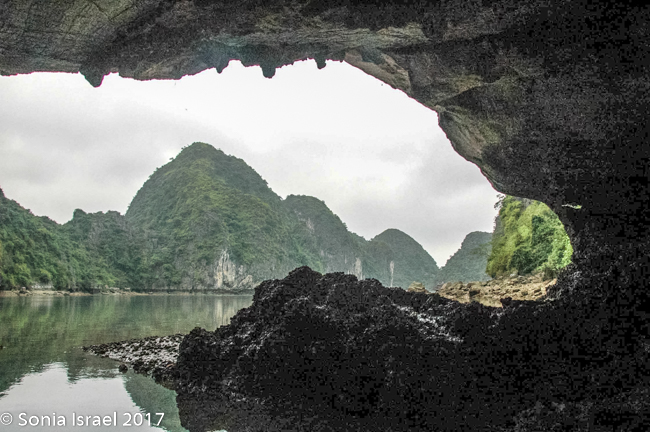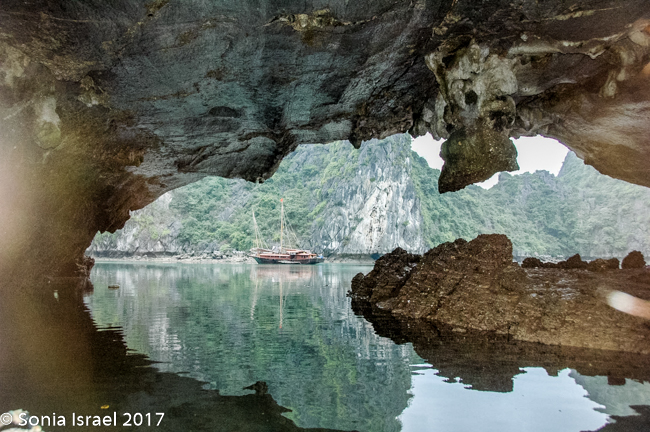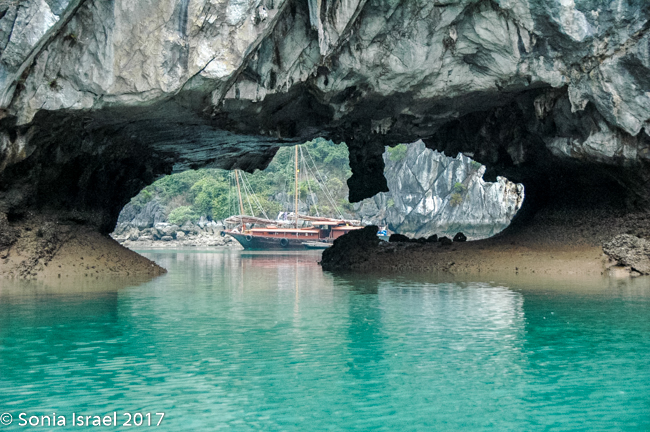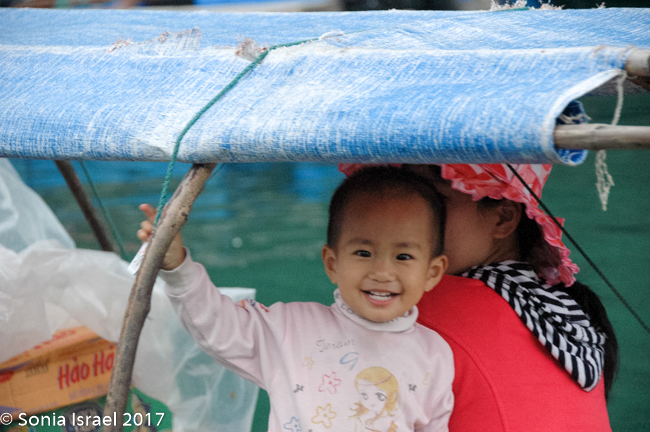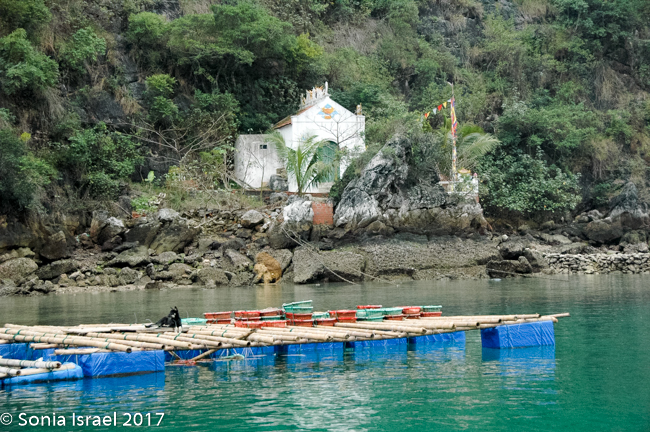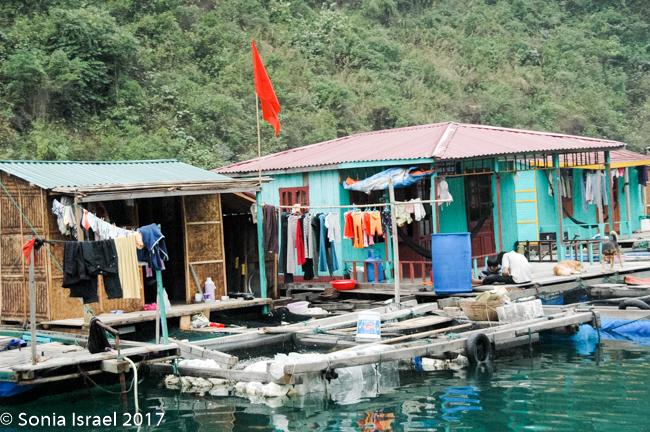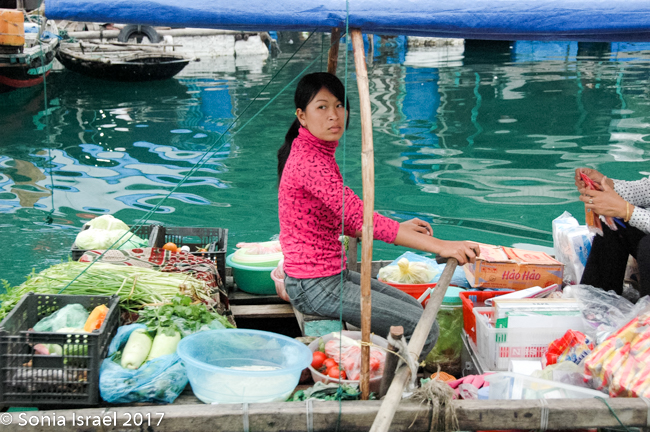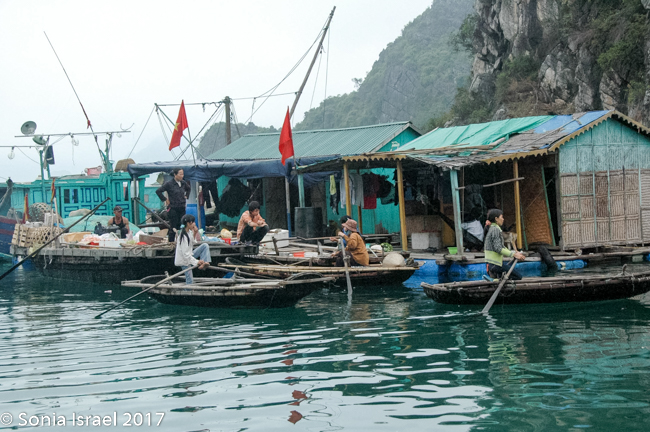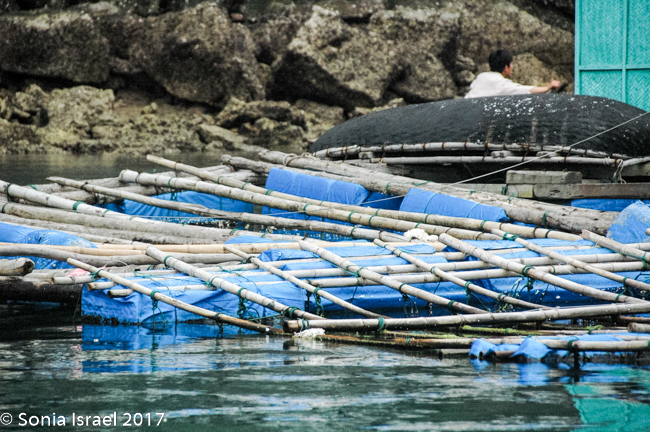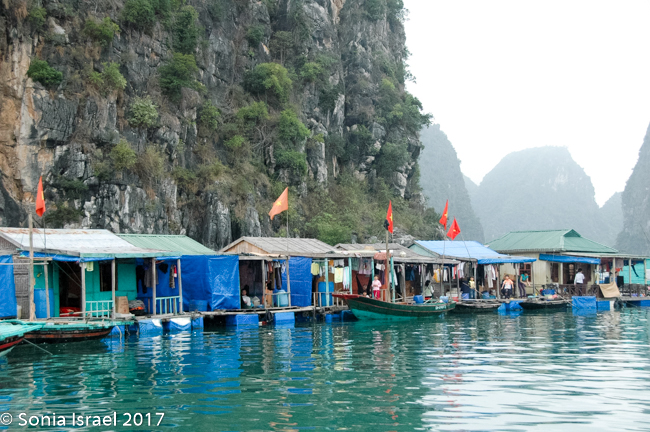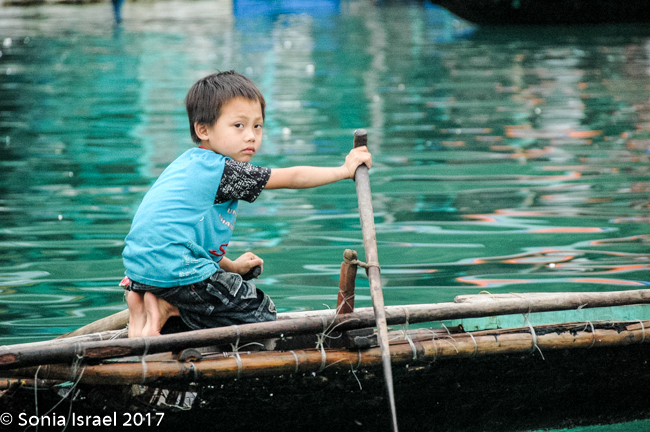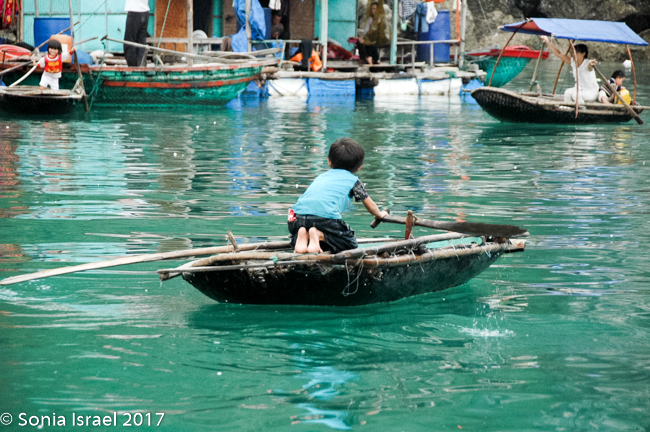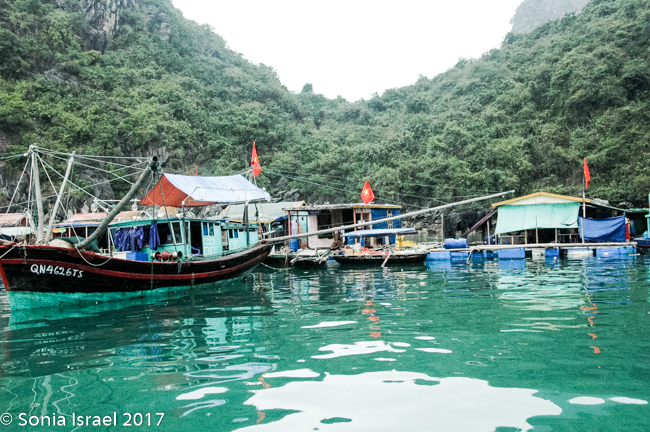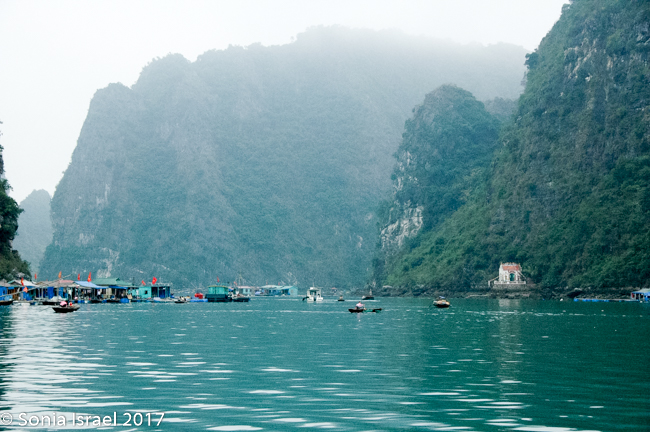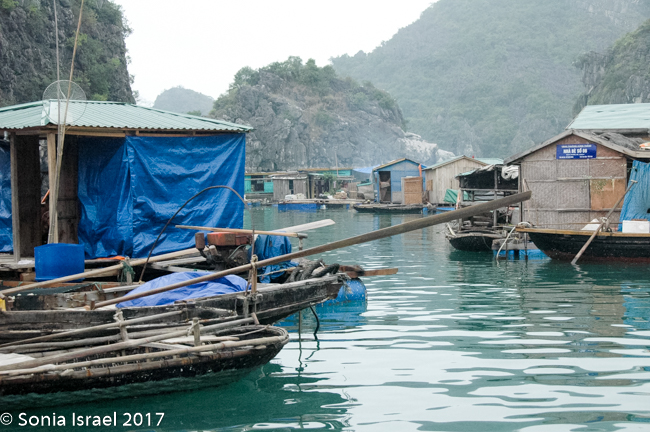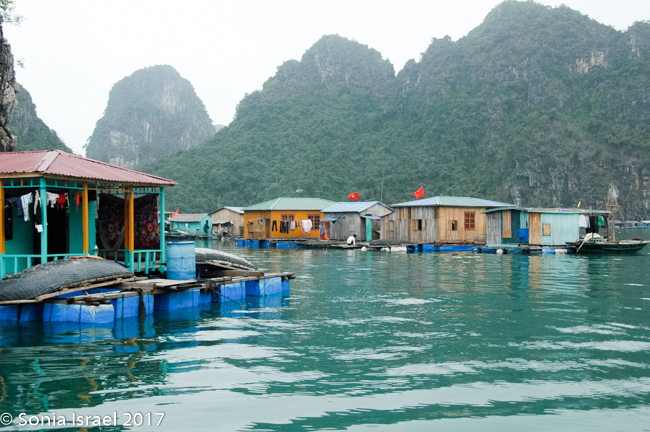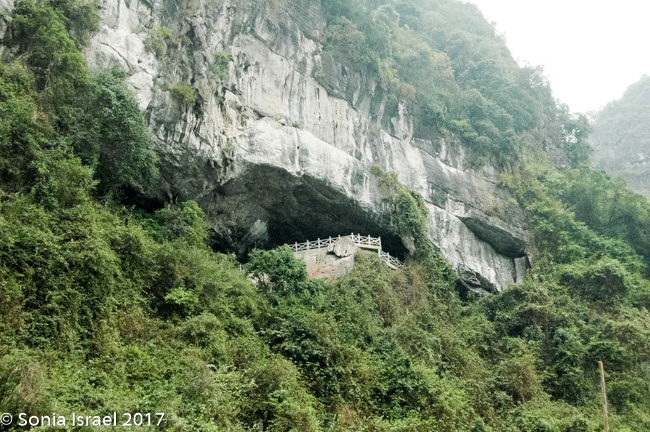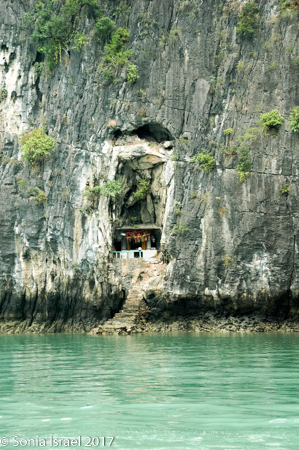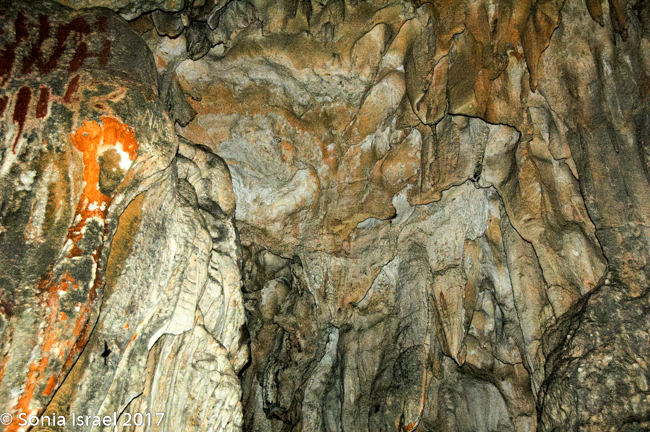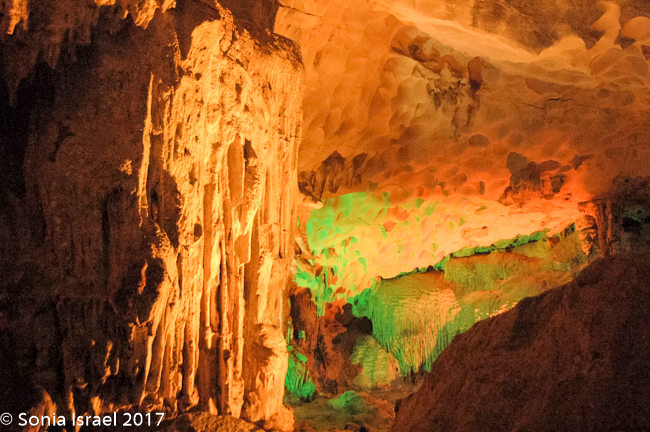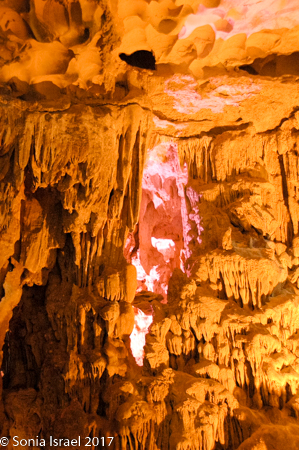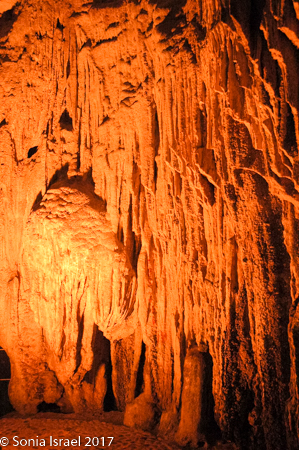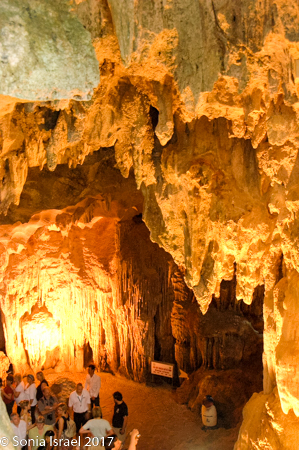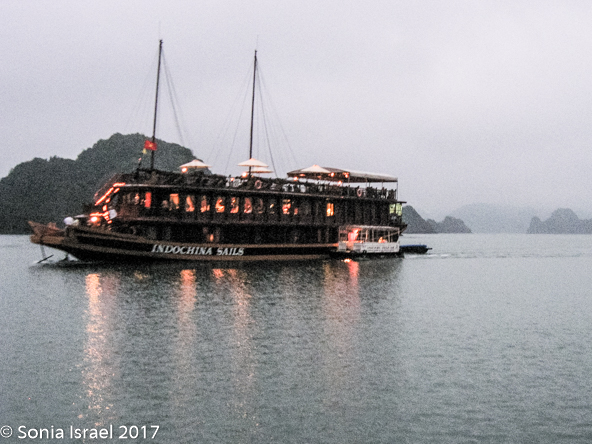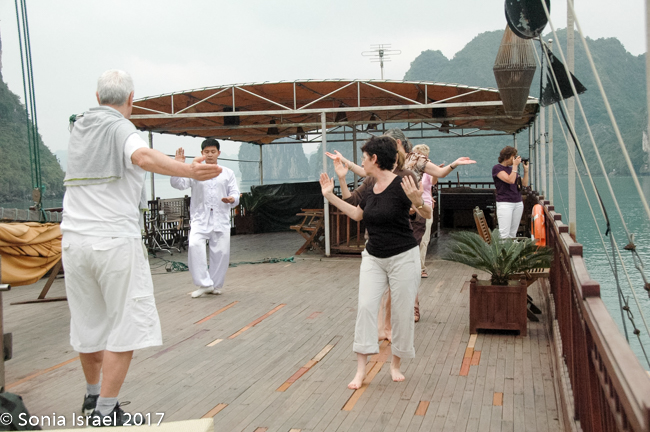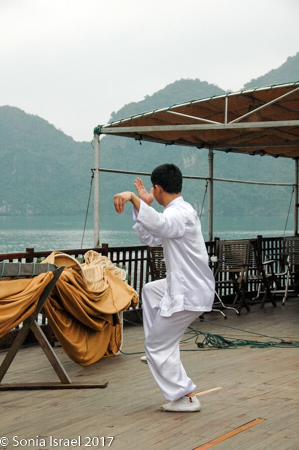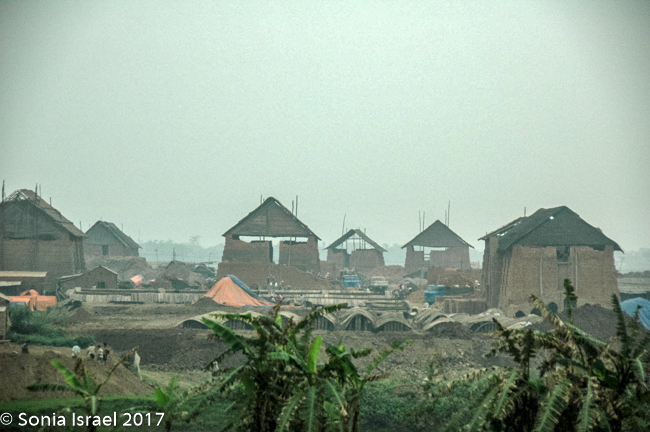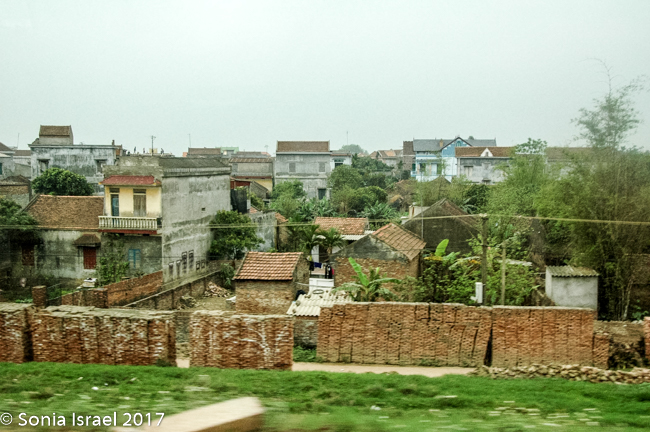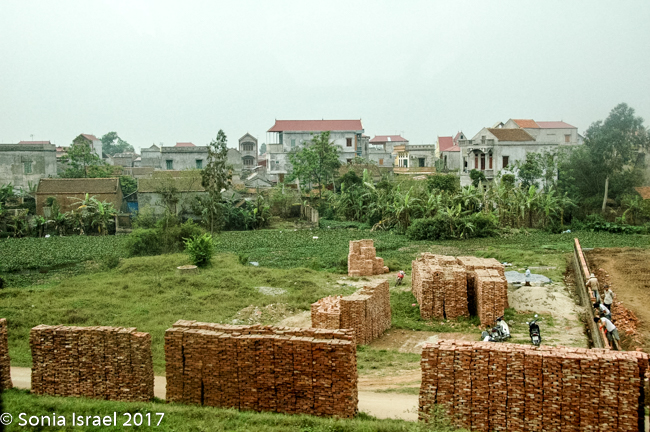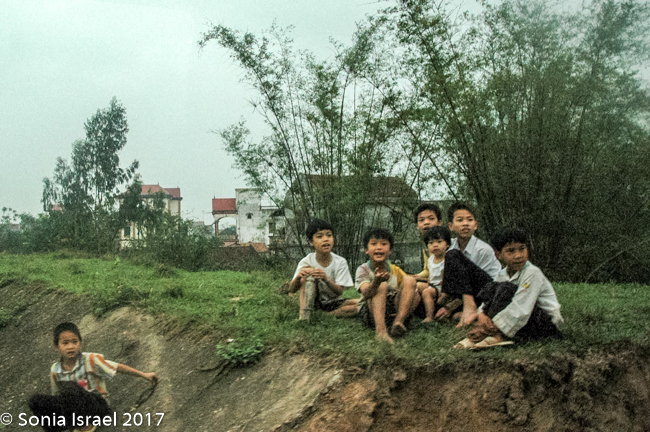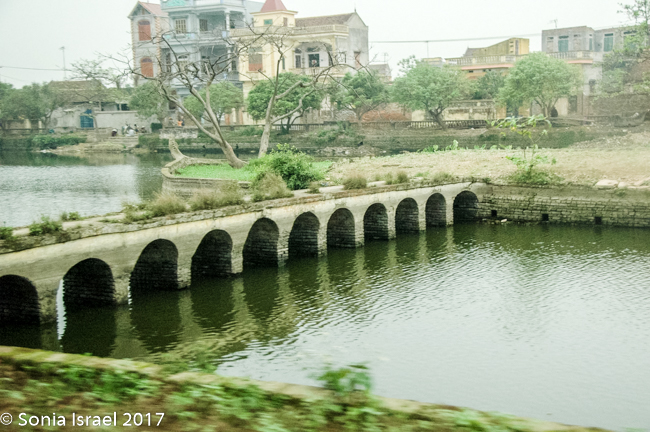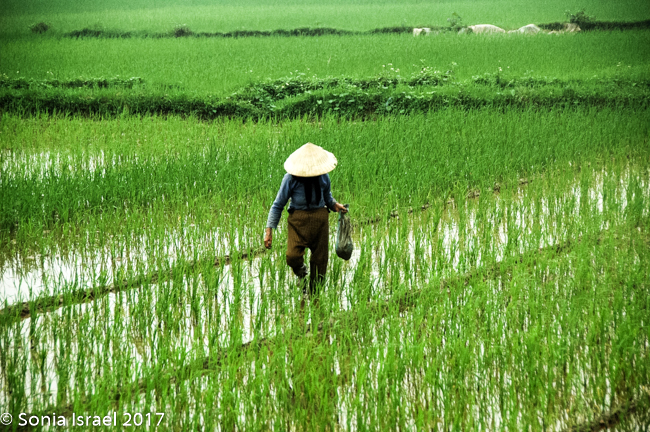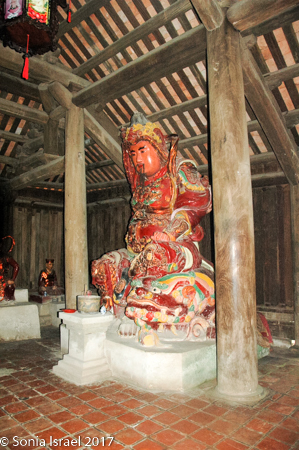Hanoi
Friday March 20
Early this morning we left Hoi An and drove back to Danang to catch a 60-minute flight to Hanoi (as it turns out which is really Ha Noi). Khan (as in Genghis Khan) met us and off we went. We were only in Hanoi for one day so we had a lot to cover. Khan didn’t think we could do it all, but we assured him that we were fast.
Ho Chi Minh’s Mausoleum
We started out at Ho Chi Minh’s mausoleum. It reminded me of Mao’s mausoleum in Beijing. There was a long line of people (and lot of school children) waiting to walk past his mummified body. Khan told us that they re-mummify his body every few months. If you are going to go in to see him, you have to check your purses and cameras as you are not allowed to carry anything with you. The mausoleum is in a large park and on the same grounds are Ho Chi Minh’s house and offices. We walked around, again watching the people. Since it was Saturday, the park was filled with families and young couples. There were also lots of military soldiers there, some with their children.
One Pillar Pagoda
In the center of the park is the One Pillar Pagoda, which rises out of the water on a single column. The pagoda represents a lotus, which is the Buddhist symbol. Just as the lotus has its roots buried in the mud under water, yet manages to rise above the surface and open its flower in the sunlight, so the Buddha was born in the impure world but through his enlightenment rose above it. The pagoda was built by Emperor Ly Thai Tho who lacking an heir, dreamt he was given a male child by the goddess of mercy, seated on a lotus flower. A short time later he married a peasant who gave him a son. In gratitude, he built the one pillar pagoda.
Temple of Literature
The Temple of Literature (Van Miieu) is a pagoda noted for it historical importance, architectural interest and meditative atmosphere. It is dedicated to Confucius. It is adjoined with the national university to teach the children of the aristocracy. The long narrow temple compound is divided into five walled courtyards. The first courtyard after the main entrance (which is large enough for one to ride in on horse back), has a pavilion dedicated to the constellation of literature. In the next compound is the well of heavenly clarity and flanking this large pool is the temple’s most famous sight, 82 stone steles resting on the backs of stone tortoises and inscribed with the names of successful candidates in their doctoral exams held between 1442 and 1780 (wow – I was a successful candidate in my doctoral exam and the celebration was nothing like this!). Another gate leads to the great house of ceremonies where Confucius is honored.
“Hanoi Hilton”
Our next stop was the Hanoi Hilton, the infamous prison used during the Vietnam War by the North Vietnamese to hold captured prisoners of war, primarily downed American pilots and air crews. To the Vietnamese, the prison was known as Hoa Lo; “Hanoi Hilton” was a nickname used by American GIs. I have lots of memories of reading and hearing about the hell our soldiers were put through here. Hoa Lo was located along a major thoroughfare in Hanoi, which put the prison in an interesting position. Passing vendors of food and various products could have contact with the prisoners, and some apparently passed notes of encouragement or offered the often starving prisoners food. They also circulated reports about the grim conditions inside the Hanoi Hilton, and brought out news about specific prisoners for concerned friends and family members.
Occupants of the prison were routinely interrogated by the North Vietnamese to gather information, and some were executed, on occasion brutally. After 1973, when the prison was closed, numerous guards and government officials denied claims that prisoners of war had been tortured at the Hanoi Hilton, despite ample evidence to the contrary.
Until the mid-1990s, the Hanoi Hilton remained largely intact. Part of it was demolished to make room for a high-rise. It was very bizarre in fact to see this high-rise building almost touching what was once a prison. The Vietnamese government decided to restore the remaining portion so that it could be used as a museum. The museum chronicles the use of the site by both the French and North Vietnamese, although some authorities have suggested that some of the information in the museum is not terribly reliable.
We walked through looking at the exhibits, at the manikins in the prison cells, at the photographs. It was a sobering tour. It is this type of experience that still brings back the memories of the Vietnam War and reminds me why it was difficult in some ways to come here.
Museum of Ethnology
This was museum morning as our next stop was the Museum of Ethnology. The Museum is divided into two parts: an indoor and an outdoor exhibition. The indoor 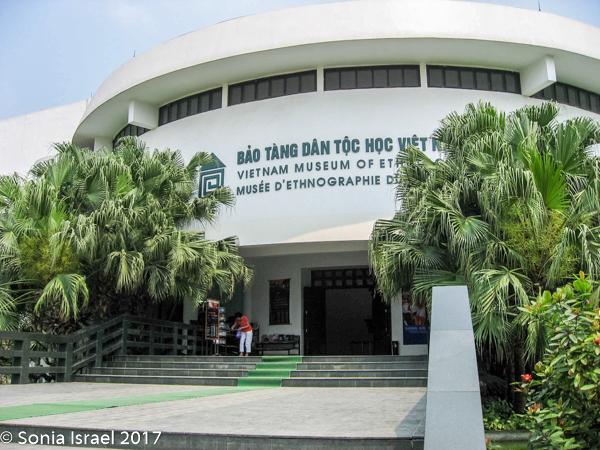 part has artifacts from the 54 different ethnic groups with their beautiful indigenous clothing. The outdoor exhibition highlights different types of houses in all parts of Vietnam.
part has artifacts from the 54 different ethnic groups with their beautiful indigenous clothing. The outdoor exhibition highlights different types of houses in all parts of Vietnam.
Quinn Thanh Temple
Moving along quickly, as we had only one day here, we went on to the Den Quan Thanh (Quinn Thanh Temple). The three ancient Chinese characters which are still seen today on the top of the entrance to the temple mean Tran Vu Quan. The temple is dedicated to Saint Tran Vu. Temples are places for worshipping saints while pagodas are dedicated to Buddha and faithful discipl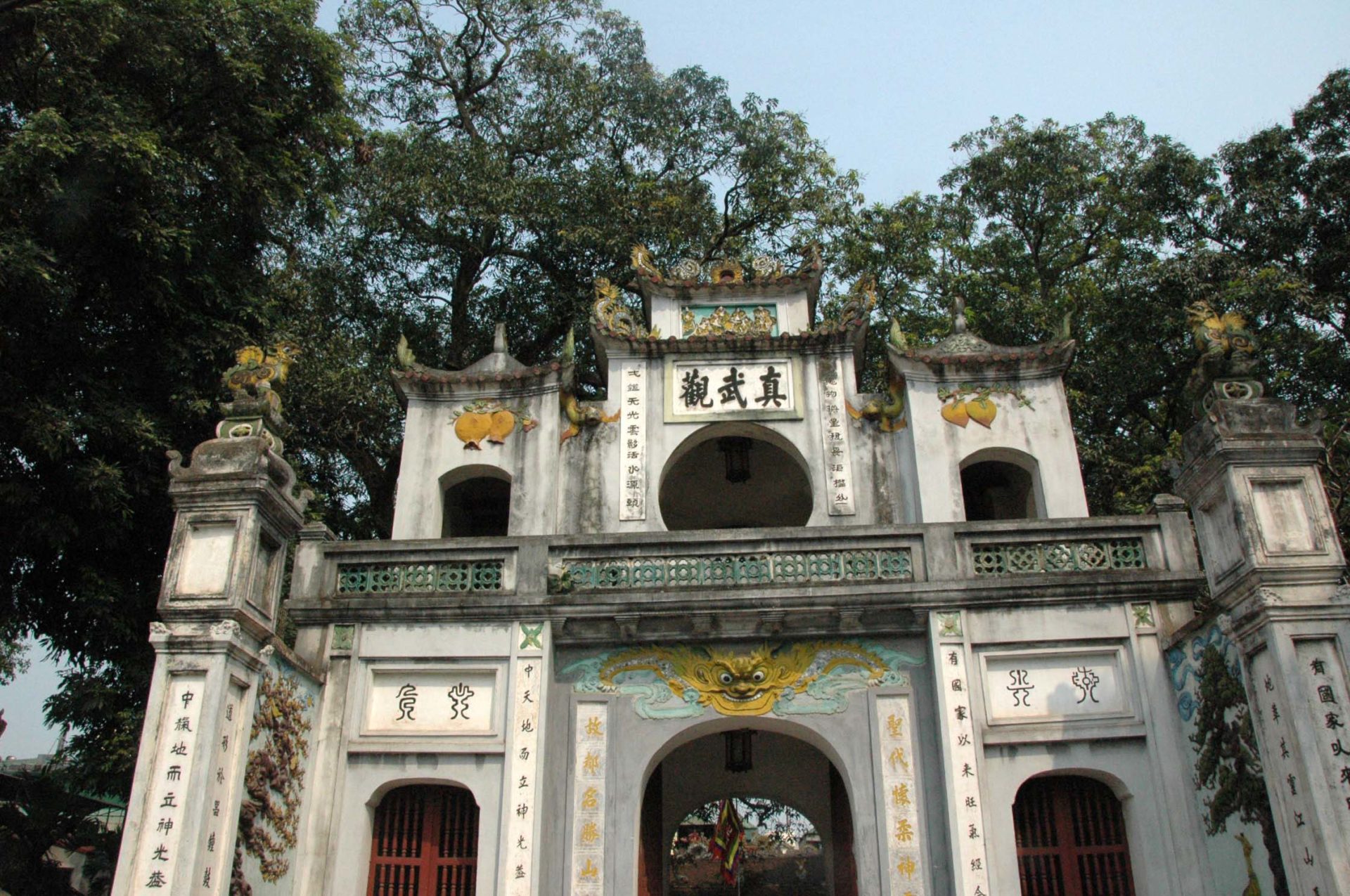 ines. Saint Tran Vu was a legendary figure and a combination between a legendary character in Vietnam’s legend and a mystic character derived from China’s legend. In Vietnam’s legend, he was a saint who had earned the merits of assisting Thuc Phan (future King An Duong Vuong) in getting rid of ghost spirit during the construction of CoLoa Citadel.
ines. Saint Tran Vu was a legendary figure and a combination between a legendary character in Vietnam’s legend and a mystic character derived from China’s legend. In Vietnam’s legend, he was a saint who had earned the merits of assisting Thuc Phan (future King An Duong Vuong) in getting rid of ghost spirit during the construction of CoLoa Citadel.
We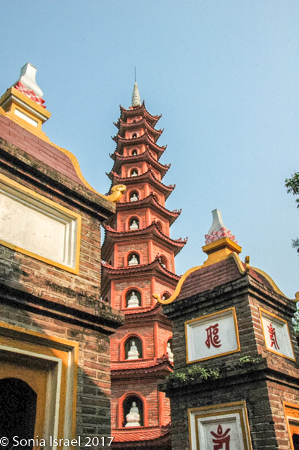 also stopped at the Tran Quoc Pagoda, in the center of town. This is the oldest pagoda in the city, being 1450 years old.
also stopped at the Tran Quoc Pagoda, in the center of town. This is the oldest pagoda in the city, being 1450 years old.
There was also a pagoda up in the hills.
Cyclo Tour
Next it was a one hour tour of Hanoi’s Old Quarter, call “36-streets” in a driver-pedalled tricycle , called a cyclo. We each had our own tricycle and driver, and while the driver was behind on a bicycle seat, we were in the front almost on the ground. This gave us a great perspective of being right at eye level with the crowds of people all around us. The wove in and out of little, narrow streets and alleys lined with thousands of small business and shops. We saw women getting manicures on the street. Haircuts on the street. We passed bakeries with fabulous looking pastries. Lots of street food. Flower sellers. And colorful shop after shop.
Water Puppet Show
We had one more stop still today and that was to attend a traditional water puppet show. This is a uniquely northern Vietnamese art form especially designed for depicting scenes from rural life and episodes of national history. This was once the way the stories of the past were carried down to the generations. The theater was small and we had very good seats. The show began with people playing traditional instruments. The curtain then opened on a pool of water with a large cloth behind it where the puppeteers stood. But we could only see the puppets. At one point, a woman came out along with a puppeteer holding a puppet that looked like her. And the puppet copied her dance movements. At the end they took the curtain away so we could see how each puppeteer handled his puppet.
And then after the show, it was time to head to the train station for our next big adventure – Sapa. Please see that separate entry. Oh, and we did see it all in one day!
Road from Hanoi to Halong Bay
March 23-24
We spent March 22 in Sapa and then on the morning of March 23, we arrived back in Hanoi from Sapa at 430 in the morning, had some breakfast and started the one-hour drive to Halong Bay. The road there was filled with sights of people working in the rice fields and water buffalo.
When we stopped to take pictures of the water buffalo, three little school girls stopped to examine us. Ben took a picture of them and then showed it to them. They burst into the best giggles. That was a treat and that is what travel is all about.
Halong Bay
Halong Bay is located in the Gulf of Tonkin and contains close to 2000 islands and islets, mostly uninhabited (40 are inhabited) and forming a spectacular seascape of limestone pillars which tower over the blue-green water. The bay is scattered with small islands and grottos created by the wind and waves. About 500 years ago, the Vietnamese poet Nguyen Trai described Halong Bay as a “rock wonder in the sky.”
So where did these monolith limestone islands come from? According to the local legend, long ago when the Vietnamese were fighting Chinese invaders, the gods sent a family of dragons to help defend the land. This family of dragons began spitting out jewels and jade which turned into the islands dotting the bay, linking together to form a great wall against the invaders. After that, the dragons became interested in peaceful sightseeing and decided to stay to live there. The place where the mother dragon flew down was named Ha Long (literally translated as “Bay of Descending Dragons) and the place where the dragon children attended to their mother was called Bai Tu Long island (Bai: attend to; Tu: children; Long: dragon), and the place where the dragon children wriggled their tails playfully was called Bach Long Vy island (Bach: white, the color of the foam; Long: dragon; Vy: tail). Halong Bay is bordered on the south by the Gulf of Tonkin and on the north by China, and on the west by Cat Ba Island. And the story must be true because the rocks in the water do indeed look like dragons and jewels.
Our wooden junk, the Halong Ginger had three decks, a restaurant, lounge, two bars, library and ten sleeping cabins. It was a wonderful way to end our trip, very relaxing and with incredible beauty.
Our day on the Ginger started with a drink of fruit juice as we boarded and settled into our beautiful room. The crew raised the orange sails and off we went.
We lunched and then cruised along the Bai Tu Long Bay. And everywhere we sailed, small boats filled with souvenirs would follow us, reaching up to the deck to try to sell us memories.
Ti Top Island
In the afternoon we stopped at Ti Top Island (also called Ti Tov) to swim on their beach and a hike up the mountain for beautiful views of the bay. The hike up is a steep climb of about 100 steps, but that took us to the summit where we had a stunning, panoramic view of Halong Bay. There is something magical about looking at all the islands rising high out of the water, with the boats with orange sails floating around them. The view from the top gave me a whole different perspective of the beauty of the bay. And here is an interesting fact: Ti Top was named after the famous Russian cosmonaut, Gherman Titov, who visited the island in 1962 with Ho Chi Minh. “Uncle Ho” decided to name the island after Titov to commemorate his visit and remember the occasion. Titov, who was the second person to orbit the earth multiple times, and the fourth person in space, returned to Halong Bay in 1997 and wrote,”My deepest thanks to destiny, which has allowed me to come back to this tiny island.”
We took a ride in on a bamboo boat through some of the hundreds of caves within the bay.
Cau Van Fishing Village
We cruised by the Cau Van fishing village which has a population of 733 in 176 floating households. Yes, floating as the village made of floating houses, a floating school and of course, a true floating market.
Thien Cung Grotto
We stopped at the Thien Cung Grotto. To get there, we had to climb up through the trees and enter through a narrow opening. But once inside, it opens up into most feels almost like a museum of art, filled with stalagmites and stalactites, many bathed in colored lights. There are characters engraved into the walls, which tell the tales of the area.
Legend has it (of course there is a legend), that beautiful young lady named Mây (cloud), caught the eye of the Dragon Prince and he fell in love with her. They were betrothed, and their wedding lasted seven days and seven nights in the very center of the grotto. In honor of the wedding, small dragons flew about through the stalactites and stalagmites, elephants danced together happily, snakes twined themselves around trees and two stone lions danced with their manes flowing in the wind. A large elephant, smartly dressed, waited for the bride and the groom. The genies of the south and north stars also came to attend the banquet, and the atmosphere was animated and lively. The natural stream of water in the center of the grotto, creates small ponds of clear water, and it is said that this was where Mây bathed her 100 children, bringing them up wisely and happily into adolescence. One path meanders out of the grotto which is the way Mây, together with 50 of her children, took to harvest new lands. The 50 remaining children, together with their father, were left to build the native land.
We got back into our little boat after marveling at the beauty of the grotto, and sailed back through the islets back to the Ginger for dinner. At night, the lights on the all the boats came out, the sun set, the fog surrounded us and the place was magical.
The next morning started with Tai Chi on deck and then breakfast. And then we headed towards the shore and the remainder of our trip.
Road back to Hanoi
On our way back to Hanoi airport and to the end of our trip to Vietnam, we passed more rice fields, children waving to us and generally beautiful scenery. We drove through a village known for making bricks.
But Thap Pagoda
We also stopped at the But Thap Pagoda in Thuan Thanh Province, Vietnam’s most famous pagoda. It is also called the Nhan Thap Temple. This four-story stone stupa is considered Vietnam’s first Buddhist center. The pagoda, built in the 13th century and rebuilt in 1647 by the Buddhist monk Chuyet Chuyet, is a complex of ten buildings over an area of 100 meters that has ancient statues and artifacts. It also has the largest Avalokitesvara (a bodhisattva who embodies the compassion of all Buddhas) statue with 1000 eyes and 1000 arms.
And then it was the airport and goodbyes.
Final thoughts on Vietnam
Yes, the trip was over and it was time to leave. Vietnam was beautiful, much more beautiful than I expected. My thoughts were of the war, but that time is mostly over. There are still many remnants. I felt there was still propaganda in places. But the people are so warm, open and friendly and it did not matter that we were Americans. The landscape is gorgeous. The food delicious. The coffee divine. The markets colorful. The air fresh. All in all, a fabulous place to visit
